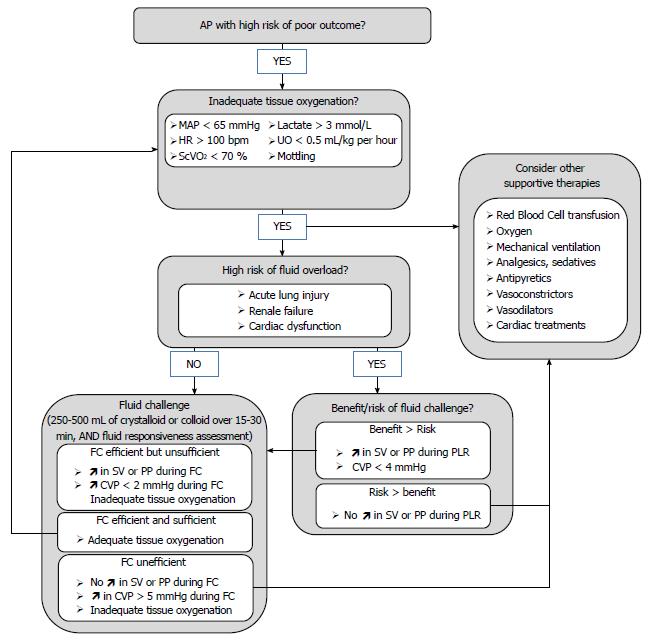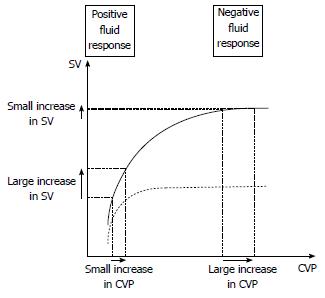Copyright
©2014 Baishideng Publishing Group Inc.
World J Gastroenterol. Nov 21, 2014; 20(43): 16113-16122
Published online Nov 21, 2014. doi: 10.3748/wjg.v20.i43.16113
Published online Nov 21, 2014. doi: 10.3748/wjg.v20.i43.16113
Figure 1 Suggested algorithm for fluid management in acute pancreatitis.
AP: Acute pancreatitis; MAP: Mean arterial pressure; HR: Heart rate; ScvO2: Central venous oxygen saturation; UO: Urinary output; SV: Stroke volume; PP: Arterial pulse pressure; PLR: Passive leg raising; CVP: Central venous pressure; FC: Fluid challenge.
Figure 2 Schematic representation of central venous pressure/stroke volume of normal (solid line) and failing heart (dotted line).
When the heart is fluid responsive, a fluid challenge induces a large increase in stroke volume (SV) and a small increase in central venous pressure (CVP). When the heart is fluid unresponsive, a fluid challenge induces a small increase in SV and a large increase in CVP. In contrast, there is no reliable threshold of CVP that can be used in current practice to predict a positive or negative response to fluid loading. This threshold depends mostly on the cardiac function at the time of fluid infusion.
- Citation: Bortolotti P, Saulnier F, Colling D, Redheuil A, Preau S. New tools for optimizing fluid resuscitation in acute pancreatitis. World J Gastroenterol 2014; 20(43): 16113-16122
- URL: https://www.wjgnet.com/1007-9327/full/v20/i43/16113.htm
- DOI: https://dx.doi.org/10.3748/wjg.v20.i43.16113










